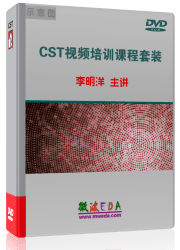怎樣在cst中自定義個脈沖
文章來源: 互聯網 錄入: mweda.com
' userdefined excitation function
Option Explicit
Function ExcitationFunction(dtime As Double) As Double
'Assign the excitation signal value for the given time to the function name.
Static bFirst As Boolean
bFirst=True
Static timeval() As Double
Static Valval() As Double
Static Nt As Integer
Dim i As Integer
Dim TT As String,a As String
If dtime=0 Then
bFirst=False
'read file data
Open "E:\User\time.txt" For Input As 1 % 時間參數
Open "E:\User\amp.txt" For Input As 2 % 幅度參數
Input #1,TT
Nt=CInt(TT)
ReDim timeval(1 To Nt)
ReDim Valval(1 To Nt)
i=1
For i=1 To Nt
Input #1,TT
timeval(i)=CDbl(TT)
Input #2,a
Valval(i)=CDbl(a)
Next
Close #1
Close #2
End If
For i=1 To Nt
If Abs(dtime-timeval(i)*1e+9)<0.05 Then
ExcitationFunction=Valval(i)
Exit For
End If
Next
End Function
' -------------------------------------------------------------------------------------------------
' Main: This function serves as a main program for testing purposes. (runs and plots the function)
' You need to rename this function to "Main" for debugging the excitation function.
'
' Please adjust the time step width and the number of time steps accordingly.
'
' PLEASE NOTE that a userdefined excitation file (*.usf) must not contain a main program for
' proper execution by the framework. Therefore please ensure to rename this function
' to e.g. "Main2" before the Transient Solver is started
' -------------------------------------------------------------------------------------------------
Sub Main
Dim tmax As Double, ntstep As Long
' -------------- PLEASE ADJUST THE SETTINGS BELOW ----------------------
tmax = 50.0
ntstep = 502
' -------------- PLEASE ADJUST THE SETTINGS ABOVE ----------------------
Dim signal As Object, n As Long, tstep As Double
Set signal = Result1D("")
signal.Initialize ntstep
tstep = tmax / ntstep
For n=0 To ntstep-1
signal.SetXY(n, n * tstep, ExcitationFunction(n * tstep))
Next n
signal.Save GetProjectBaseName() + GetProjectBaseNameSeparator() + "excitation function.sig"
signal.AddToTree "Excitation Signals\Userdefined Functions\signal1_plot"
SelectTreeItem "Excitation Signals\Userdefined Functions\signal1_plot"
ResultTree.RefreshView
End Sub
但是就是運行不起。 哪位 幫我看看這個程序,
微波EDA (www.tanchuguo.com) 網友回復:
-
網友回復
不太清楚這些 -
網友回復
-
網友回復
好復雜,從來沒有自定義過激勵函數。
申明:網友回復良莠不齊,僅供參考。如需專業解答,推薦學習李明洋老師的CST培訓視頻,或咨詢本站專家。
-

CST中文視頻教程,資深專家講解,視頻操作演示,從基礎講起,循序漸進,并結合最新工程案例,幫您快速學習掌握CST的設計應用...【詳細介紹】
推薦課程
-
7套中文視頻教程,2本教材,樣樣經典
-
國內最權威、經典的ADS培訓教程套裝
-
最全面的微波射頻仿真設計培訓合集
-
首套Ansoft Designer中文培訓教材
-
矢網,頻譜儀,信號源...,樣樣精通
-
與業界連接緊密的課程,學以致用...
-
業界大牛Les Besser的培訓課程...
-
Allegro,PADS,PCB設計,其實很簡單..
-
Hyperlynx,SIwave,助你解決SI問題
-
現場講授,實時交流,工作學習兩不誤


